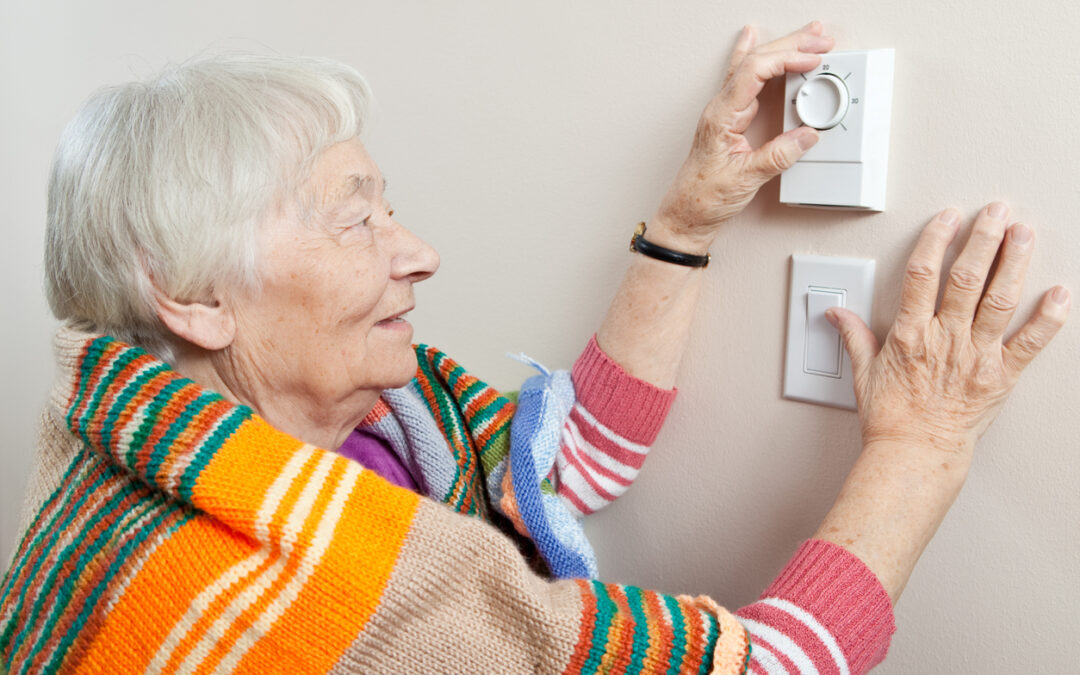Energy efficiency technologies like smart thermostats and cool roofs can help lower your energy bills and make your home more comfortable. Here are 5 technologies that can save you time and money:
Just the way you want it
Integrated “smart home” technology has been available for years, but it’s getting smarter. As a result, more and more people are taking advantage of the benefits of internet-enabled appliances and security. For example, smart thermostats can adjust to a schedule you determine, sync with your smartphone and sense when you are home or away to set the temperature accordingly. They can even raise to a higher temperature in summer and lower in the winter. Find more details here from the U.S. Department of Energy. Is this the year you begin to make your living space more comfortable and cut your monthly bills?
Cooling and heating while cutting waste
When buying a new air conditioner, look for key features to get the most efficient option. First is the ENERGY STAR® label, which means that the unit will use at least 8 percent less energy than other new models. Second is a high Seasonal Energy Efficiency Ratio, or SEER rating, that can be found on central air conditioning units on the yellow EnergyGuide label. The higher the rating, the more efficient the unit. Once installed, you can help your equipment run efficiently for the long haul by changing out filters and setting room thermostats wisely. Ask a qualified professional about the maintenance basics and you’ll be sure you are running your HVAC unit efficiently.
Consider a more efficient heating and cooling system. Air source (electric) or ground source (geothermal) heat pumps are highly energy efficient. They move heat from outside a home to inside in cold months, and from the inside out to cool a house in warm months. A heat pump uses electricity to collect the heat, compress it, and distribute it. Remarkable advances in heat pump technologies have further boosted the effectiveness of these units. Efficiency Vermont has tips for how to get the most out of your heat pump, particularly in a cold climate.
You can heat your water just right
Heating water can account for around 18 percent of your energy bill. Choose from efficient water heater types, such as heat pump water heaters or tankless units that heat the water on-demand. If your water heater has a storage tank, make sure it is not oversized for your home’s purposes, which can waste energy. Once installed, save energy and money by ensuring that the unit is insulated and set to an appropriate temperature. Lowering the temperature from 140 degrees to 120 degrees Fahrenheit is recommended to save energy and still have water hot enough for most home uses. If you’ll be away for a few days or more, turn your appliance’s temperature way down. You don’t need to pay to heat a tankful of water while you’re gone. The U.S. Green Building Council gives details here on how to get the most from your water heater.
Adding a top layer of protection
A lot of energy can get absorbed (and released) through the roof of a building. Both cool and green roofs have emerged as ways to address the unwanted heat while providing other efficiency benefits. Cool roofs use specialized materials to reflect more solar energy and avoid the associated cooling costs. The Institute for Market Transformation has more information on the benefits and considerations of cool roofs here. Green roofs (or walls) use plants to absorb solar energy and insulate the building. Additional benefits can include reducing stormwater runoff and–similar to cool roofs–extending its lifespan, as the roof is protected from some weather impacts. The U.S. National Park Service discusses green roofs here.
Check your existing insulation
Your home can be weatherized and brought up to current energy code for better performance. One key way is by installing new insulation and making sure your windows, doors and “thermal bypass” areas — such as electrical and plumbing chases — are sealed correctly. Proper targeted ventilation is also essential. Improvements to the building envelope (your home’s insulation combined with effective doors, windows, and walls) help you maintain interior comfort. With higher R-values, the efficiency rating for insulation, you will lower your heating and cooling costs. The U.S. Department of Energy explains insulation and home weatherization here.
Join us on Energy Efficiency Day on October 6, 2021, to celebrate energy efficiency. Sign up as a supporter or ask your elected officials to issue a proclamation.


Recent Comments